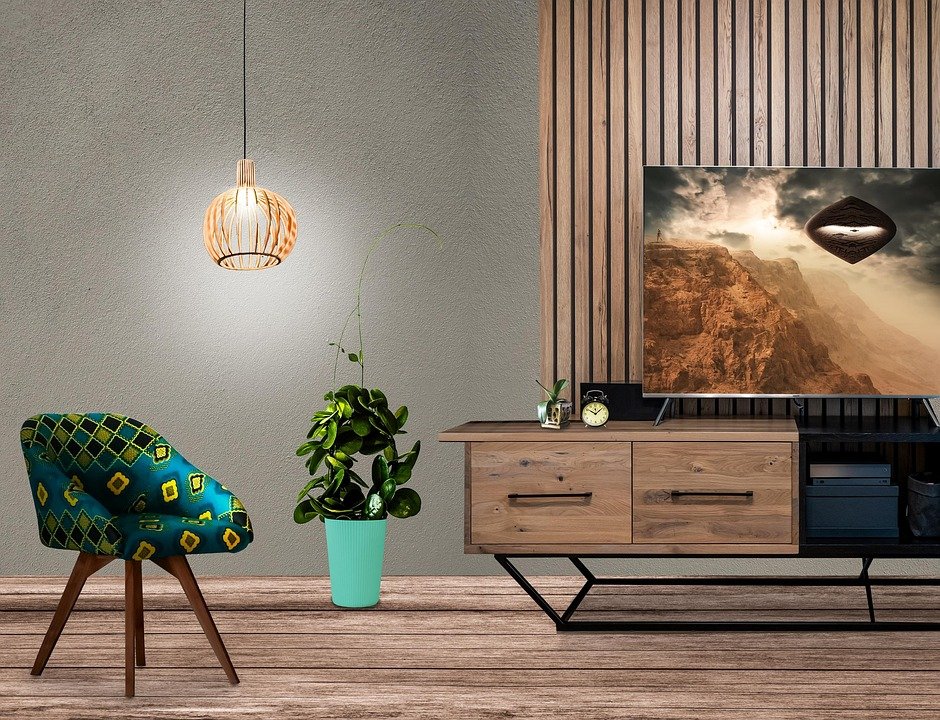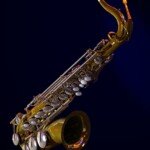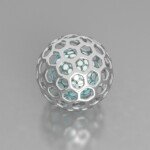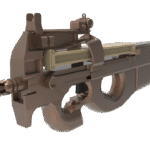Building a Night City Legend: The Ultimate Guide to Metal 3D Printing Cyberpunk 2077 Props with Professional Precision
Walking into the rain-soaked, neon-lit streets of Night City, the pulse of “Cyberpunk 2077” will be undeniable. From Johnny Silverhand’s iconic Malorian Arms 3516 pistol to sophisticated cybernetic enhancements and even V’s trusty Griffon motorcycle, the game’s universe is defined by its unique high-tech aesthetic. Many fans long to own a tangible part of this world. Although plastic 3D printing abounds, true essence Cyberpunk style – cold, industrial weight, complex sheen, for real Future technology – the best way to capture it is Metal.
This is where specialized metal additive manufacturing (AM) turns a passion project into a museum-worthy artifact. Let’s take a closer look at how enthusiasts and collectors are taking their cyberpunk dreams into chrome territory using high-end metal 3D printing.
Why metal makes your cyberpunk props better than plastic
Forget the slightly flimsy feel or visible layer lines of FDM/Plastic SLA. Metal 3D printing, especially Direct Metal Laser Sintering (DMLS) and Selective Laser Melting (SLM)providing incomparable advantages for cyberpunk props:
- Real weight and feel: Metal has an inherent density and weight that plastic cannot replicate. Holding a cold titanium alloy printed Malorian pistol in his hand, it instantly reminds people of the seriousness and danger of Night City. It feels like a real weapon, not a toy.
- Superior strength and detail: Metal additive manufacturing uses powerful lasers to fuse fine metal powders layer by layer to create extremely dense, strong parts. This allows simulation of the complex lattice structure of internal circuitry, the sharp edges on mantis blades, and the incredibly fine detail on implants, without sacrificing structural integrity.
- Exquisite surface treatment: Post-processing techniques such as high-gloss polishing, sandblasting, vapor smoothing (for certain alloys) or electroplating can achieve a variety of signature finishes: a mirror-like luster in chrome, delicate brushed titanium or a weathered, battle-damaged patina. This versatility embodies the style of cyberpunk, from corporate chic to edge-running rugged.
- Display and operating durability: Compared to plastic, metal prints are significantly more resistant to accidental drops, temperature fluctuations (like hot console exhaust!), and long-term UV degradation. Your carefully crafted prop will become a lasting display piece.
- Material description: Working with advanced alloys such as AlSi10Mg, Titanium 64, Stainless Steel 316L and even Cobalt Chromium Alloys has its own story. It implicitly talks about high-cost cybernetics, military-grade weapons, or custom-designed implants straight out of lore.
The Anatomy of a Professional Metal Cyberpunk Print: From File to Finished Chrome
Bringing digital cyberpunk assets into the real world through metal additive manufacturing requires expertise and specialized equipment. Here’s how GreatLight accomplishes this:
-
Blueprint: Optimize Digital Files
- source: It’s crucial to start with high-quality, diverse STL or STEP files, preferably extracted directly from the game or professionally modeled on commission.
- Engineering review: Our experts analyze the model’s structural integrity (can the thin walls withstand the stress of the printing process?) and orientation (minimize supports to reduce surface pitting and post-processing complexity). We may recommend design adjustments to achieve optimal manufacturability without affecting aesthetics. Complex components like weapons are often strategically divided into printed subassemblies for printing and reassembly.
- Support generation: Advanced software generates minimal separation supports specifically tuned for metal sintering, which is critical for overhangs and internal lattices.
-
Forging Night City: Metal Printing Process (DMLS/SLM)
- Material selection: Depending on your desired finish, weight, budget, and functionality, we recommend the best metal powder (e.g., aluminum for lightweight pistols, titanium for high-end implants, stainless steel for durable armor pieces).
- Build: Your model is "slice" into an ultra-thin layer (usually 20-60 microns). The printer chamber is filled with inert gas (argon/nitrogen) to prevent oxidation. A high-power laser carefully scans and melts each layer of metal powder according to the design. This layer-by-layer fusion builds a solid object within the powder bed.
- cool down: After printing, the build chamber undergoes controlled cooling to minimize internal stress within the newly formed metal part.
- Details determine success or failure: professional post-processing
- Remove powder: Carefully remove the cooled printed cake from the printer. Special tools are used to carefully remove excess unmelted powder, including the delicate internal channels found in many cyberpunk weapon models.
- Support removal: Use precision techniques such as EDM wire cutting or CNC machining to remove supports to avoid damaging critical surfaces. This step requires great skill.
- Relieve stress: Heat treatment, usually in a vacuum furnace, removes the internal stresses created during the rapid heating and cooling of the laser.
- Surface transformation:
- Initial refinement: Manual sanding, CNC machining or micro-blasting of critical surfaces.
- polishing: Achieve a mirror chrome finish (e.g. Arasaka logo or chrome simulation) or a satin/brushed effect.
- Vapor/Hot Isostatic Pressing (optional): Achieve maximum density and surface smoothness in critical applications.
- Custom Finishes: Plating (gold, copper, nickel), custom patina, enameling, label/serial number laser etching. This is where your cyberpunk prop really tells its story – is it factory-fresh trauma team gear, or a scrapped artifact covered in grime?
- Assembly and integration: For multi-part builds (most props!), the components are carefully aligned and glued or mechanically fastened. Electronic integration (network limb LEDs, working laser sight) happens here.
Case example: Bringing iconic gear to life
- Johnny Silverhand’s Malorian Weapon 3516: Perfect candidates for DMLS printing on titanium or stainless steel. Requires precise internal chambering, typically suitable for printability close to 1:1 ratio. Polished slide/frame, grip section sandblasted. Enables fine detail printing of engravings. The weight replicates the massive recoil Johnny mentioned.
- Mantis Knife: Complex geometries require strategic segmentation. Titanium SLM achieves strength-to-weight ratio. Rigorous grinding/polishing of the blade. Articulated joint printing is possible with post-finishing tolerance control.
- Trauma Team Armor Plating: Aluminum alloy for lightweight panels worn during cosplay. Mesh structures can be incorporated for strength and aesthetics. Complex surface profiles are required. Ideal for sandblasting and panel lining.
- Cyberdeck/Microchip replica: Microscopic details can be achieved using metal additive manufacturing. The surface is printed with SanDisk style hieroglyphics and subtle chamfering. Ideal for AlSi10Mg or display titanium parts.
- gun shell project "basket" rifle: Challenging multi-part build balancing structural sections and intricate details like vents. SLM features stainless steel at its core, with polished chamfers contrasting with the matte body.
Conclusion: Upgrade to metal for a true cyberpunk experience
Plastic prints have brought life to countless fans, but for those seeking the ultimate expression of Cyberpunk 2077’s aesthetic – weight, icy touch, industrial sophistication, pure texture present – Professional metal 3D printing is the next frontier. It transcends enthusiast limitations, producing heirloom-quality pieces that resonate with the game’s core themes of high technology, enhancement, and raw power.
Although complex, an investment in specialized metal additive manufacturing delivers unparalleled returns in authenticity and durability. Hongguang Metal 3D Printing Providing the necessary bridge to transform your carefully sourced Night City STL into stunning chrome reality. Leverage our advanced DMLS/SLM capabilities, extensive materials expertise and comprehensive one-stop finishing services to ensure the highest fidelity for your projects.
Don’t settle for plastic approximations. Put the true weight and soul of Night City into your hands with precision engineered metal.
Frequently Asked Questions about Metal 3D Printing “Cyberpunk 2077” Props
Q: Are metal 3D printed props significantly heavier?
A: Yes, essentially. However, professional services can optimize the design, using lightweight alloys such as aluminum (AlSi10Mg) to incorporate lightweight lattice structures into hidden solid parts and strategically hollow sections to reduce mass while maintaining feel. The plastic Marlowe may feel like a toy; the metal one feels like a real gun.
Q: My model is complex and has internal components/lattices. Can metal printing be processed?
Answer: DMLS/SLM excels at complexity. Internal channels, grids (e.g. "gorilla weapons" or cybernetic port), and complex undercuts are possible thanks to the powder support. However, removing powder from internal voids requires expertise and specialized equipment—knowledge and equipment that specialist suppliers like GreatLight have.
Q: What about designs with moving parts?
A: In some cases, basic articulations (hinges, pins) can be printed directly as single pieces ("Print in place") after careful design and post-processing/number of cycles. More complex components (such as a cocking pistol slide) are typically printed as separate components and post-processed assembled using pins/bearings/adhesives. Our engineering team helps optimize the design of these components.
Q: Can I get a mirror chrome finish?
Answer: Of course! Starting with a base alloy such as SS316L or titanium, professional polishing (hand or CNC machine-assisted) can achieve a stunning high-gloss finish. Electroplating (nickel, chromium plating on copper) provides the deepest mirror chrome effect and enhances corrosion resistance. Discuss your vision with our team.
Q: How much does a professional metal cyberpunk prop cost?
A: Costs vary widely based on prop size/complexity, materials chosen (premium titanium vs. aluminum), level of finishing (raw, mirror polished vs. intricate patina), and quantity. Simple smaller pieces can cost hundreds of dollars, while complex large props such as elaborate weapons or armor sets can cost significantly more. We provide detailed quotations based on your specific models and requirements. Remember, this is an investment in authentic, durable crafts.
Q: If I only have a concept or screenshots, can GreatLight help?
Answer: Yes! Although we specialize in manufacturing, we often work closely with skilled 3D modelers. If you have detailed screenshots or concepts, we can connect you with our trusted network of digital artists who specialize in game-accurate prop modeling. Then we deal with additive manufacturing and finishing expertise.
Q: How long does it take to produce?
A: Production time depends on project complexity, queue and completion level. Simple parts with minimal finishing may take a week or two. Complex props requiring advanced finishing or plating typically require 3-6 weeks. We provide estimated timelines up front.
Ready to manifest your part of Night City IRL? Stop rolling plastic simulation. Embrace the weight of real chrome. Upload your Cyberpunk 3D file [Link to GreatLight Quote/Upload Page] Or contact our team of experts today to discuss building your legacy with professional metal additive manufacturing. Your premium cyberpunk collection is waiting for you.










































